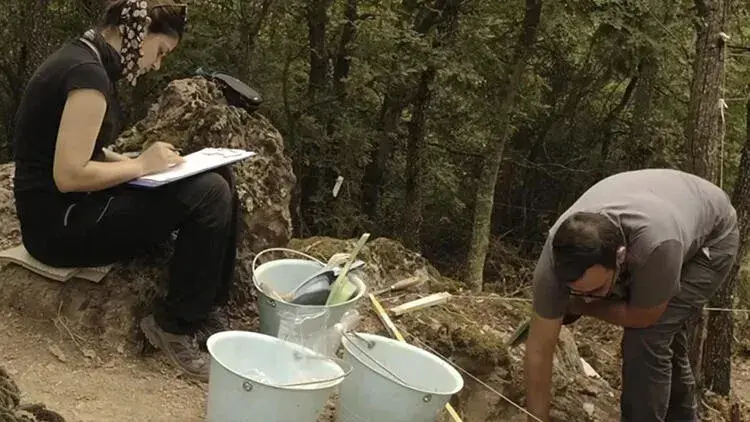Paleolithic workshop unearthed in cave
ÇANAKKALE

A workshop section has been unearthed during the excavations in the İnkaya Cave, providing information on human migrations in the Paleolithic period in the northwestern province of Çanakkale.
İnkaya Cave, located within the borders of Bahadırlı village in the Çan district, was found during the Muğla and Çanakkale Provinces Survey conducted in 2016 under the direction of İsmail Özer, a lecturer at Ankara University, Department of Paleoanthropology. In the cave, which will shed light on the migration of people of the Paleolithic period between Anatolia and the Balkans, excavations were carried out by an international team between 2017 and 2020 under the presidency of the Troy Museum Directorate. The excavations this year unearthed the workshop part of the cave from the Middle Paleolithic period.
Explaining the importance of the excavations in İnkaya Cave, the excavation director Özer said, “İnkaya Cave excavation is one of the six cave excavations within the body of the Culture and Tourism Ministry. It also has an important location in terms of being the first and only cave known so far in Western Anatolia. At the same time, the findings in the cave give us important information about the distribution areas of humans in Western Anatolia, their settlement dates and possible migration routes between Anatolia and the Balkans. This year’s work was carried out with the participation of 15 people from different universities in Türkiye. The Japanese academics in the excavation team did not participate in the works this year, but in fact, excavation works continue as an international study.”
Özer said that the İnkaya Cave excavations continue inside the cave and the open area settlement around it.
“We also carry out surface surveys in the surrounding areas with the aim of discovering the boundaries of the cave and its spreading areas. This year’s work was carried out mostly in the trenches in the western and southern parts of the cave. We went down to 130 centimeters in the western part of the cave. We detected the presence of a chipped stone find at this depth. This indicates that this part of the cave was most likely used as a workshop. It shows us that there was a long-time settlement in the cave during the Paleolithic period,” he said.
Stating that they recorded every find in the Geographic Information System, Özer said, “According to this system, the findings we obtained give us information about the activities in which different areas of the cave were used by the people of the period.”
















